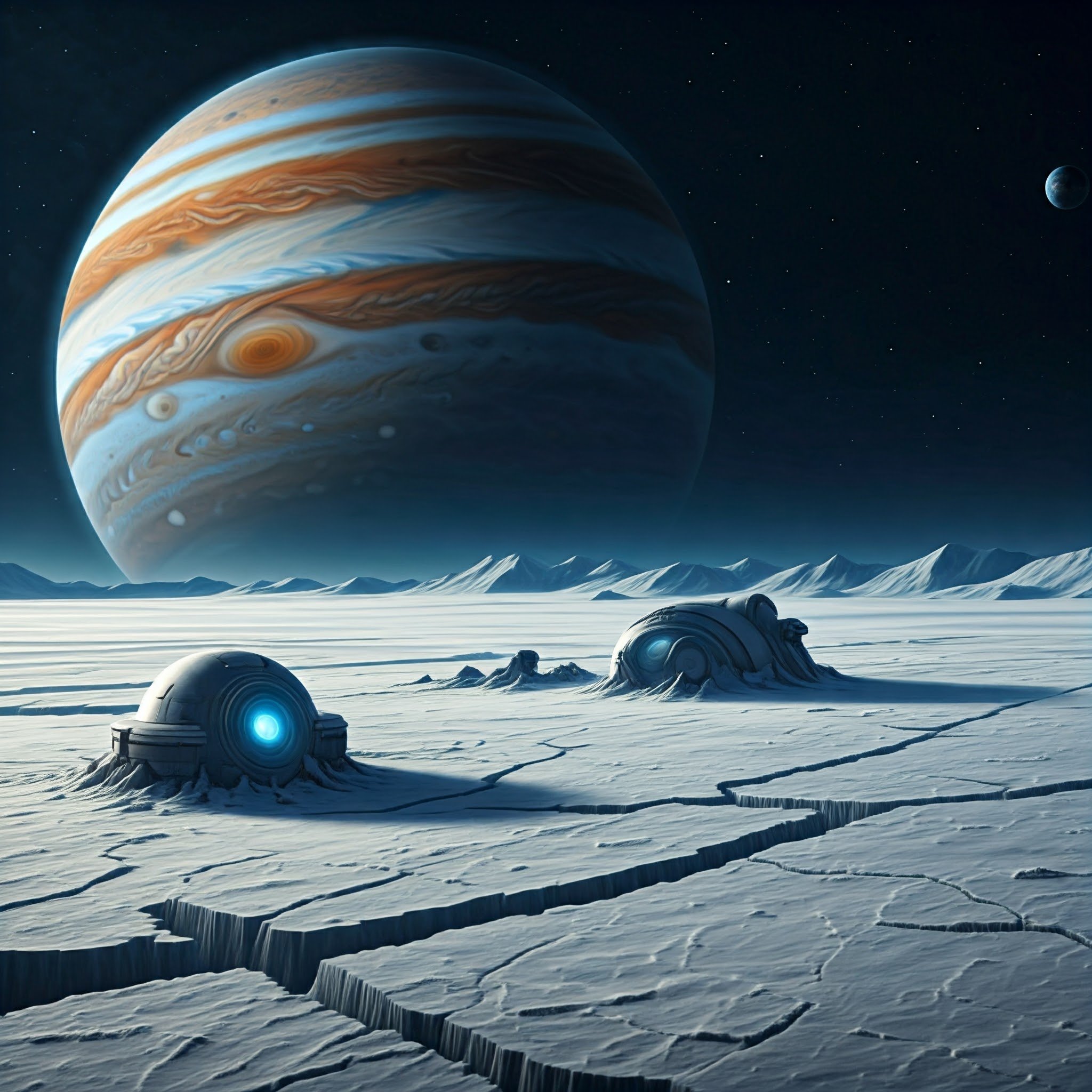Art Blog #90: Europa Clipper: Turning Science Fiction into Reality
23. November, 2024 - Reading time 8 Min.
#EuropaClipper #SpaceExploration #Astronomy #ScienceFiction #Fanstasy #SpaceArt
Europa is no ordinary moon. With a surface covered in cracked ice resembling Earth’s polar regions and an ocean beneath that might hold twice as much water as all of Earth's oceans combined…
MODERN CONTEMPORARY ART & SCULPTURE
The Europa Clipper: Turning Science Fiction into Reality
For centuries, humanity has looked up at the stars, driven by a relentless curiosity to understand our place in the cosmos. One of the most tantalizing questions we’ve ever asked is: Are we alone? The Europa Clipper mission, set to journey deep into our solar system, could bring us closer to answering that profound question than ever before.
A Mission for the Ages
Developed by NASA and launched in October 2024, the Europa Clipper is not just another spacecraft—it’s a scientific marvel. This ambitious mission will travel over 400 million miles to the icy moon Europa, one of Jupiter’s most fascinating satellites. After years of travel, the spacecraft is expected to arrive at Europa in 2030, poised to unravel secrets hidden beneath its frozen crust.
Europa is no ordinary moon. With a surface covered in cracked ice resembling Earth’s polar regions and an ocean beneath that might hold twice as much water as all of Earth's oceans combined, Europa has become a prime candidate for harboring life beyond Earth. If life can thrive in Earth's deep ocean hydrothermal vents, why not in Europa's subterranean seas?
What Will Europa Clipper Do?
Unlike missions that land or orbit their targets, Europa Clipper will conduct multiple flybys of Europa, meticulously mapping its surface and probing its mysterious subsurface. Equipped with high-tech instruments like ice-penetrating radar and spectrometers, the spacecraft will analyze the moon's ice shell, its underground ocean, and the possibility of plumes of water vapor erupting into space.
Here’s a fun fact: Europa's ocean is estimated to be 40–100 miles deep, completely shielded by 10–15 miles of ice. Imagine the potential worlds beneath that ice—ecosystems untouched for billions of years!
A Journey Fueled by Curiosity
Europa Clipper is more than a mission; it’s a testament to humanity's endless pursuit of knowledge. What drives us to invest billions of dollars and decades of effort into such a distant destination? It’s the same force that led ancient civilizations to map the stars or seafarers to cross uncharted oceans—the insatiable desire to understand the unknown.
This mission represents our quest to answer profound questions about life's origins, the evolution of the universe, and the resilience of living systems. Europa Clipper isn’t just searching for microbes or alien life—it’s searching for a story. The story of how life, in all its miraculous forms, can emerge and survive against all odds.
Why Does Europa Matter to Us?
Europa has been a muse for storytellers and scientists alike. From Arthur C. Clarke’s *2010: Odyssey Two* to cutting-edge science, this icy moon has sparked our imaginations for decades. Clarke himself wrote that "attempt no landing there," as if acknowledging Europa's enigmatic allure. Today, we aren’t attempting a landing, but our probe will bring us close enough to answer questions that have burned in our collective consciousness for generations.
The Most Exciting Wait in Human History
Here’s where it gets suspenseful: By the 2030s, the Europa Clipper will be streaming back data from its daring flybys. Will it find signs of life—chemical fingerprints, microscopic organisms, or something utterly unexpected? What if it discovers an ecosystem teeming with alien life, rewriting everything we know about biology and the universe itself?
This isn’t just a mission for scientists; it’s a mission for all of humanity. Its discoveries could redefine our understanding of life, evolution, and the cosmos. What Europa Clipper might find beneath that icy crust could alter the course of human history forever.
For now, we wait, watching this brave little spacecraft venture into the cold, dark reaches of space. Whatever Europa Clipper finds—or doesn’t find—one thing is certain: the journey itself is a triumph of human imagination, curiosity, and the unyielding drive to answer the ultimate question—are we alone?
Stay tuned. The answers might just be closer than we´ve ever seen in a sci-fi movie!
End






